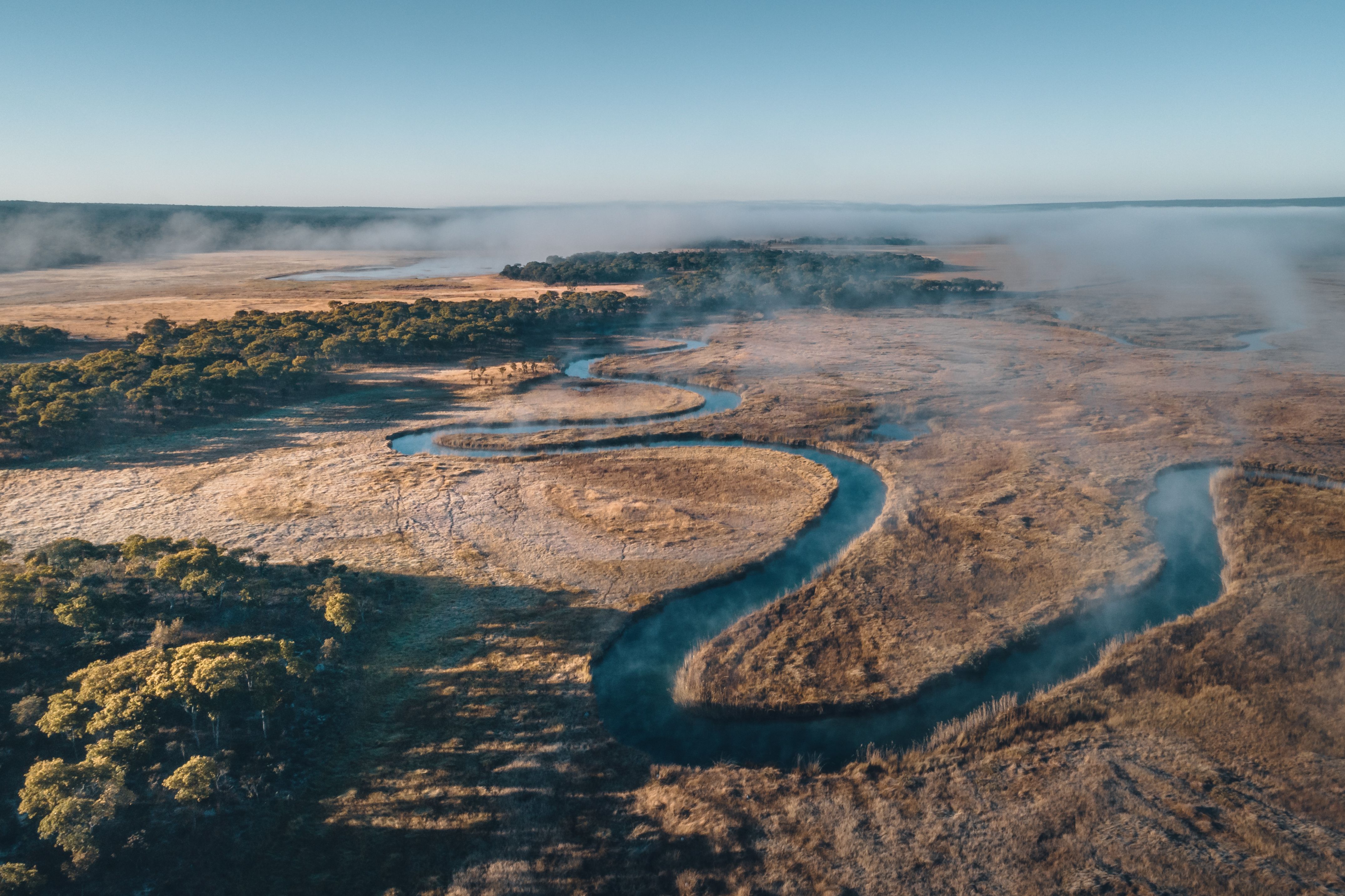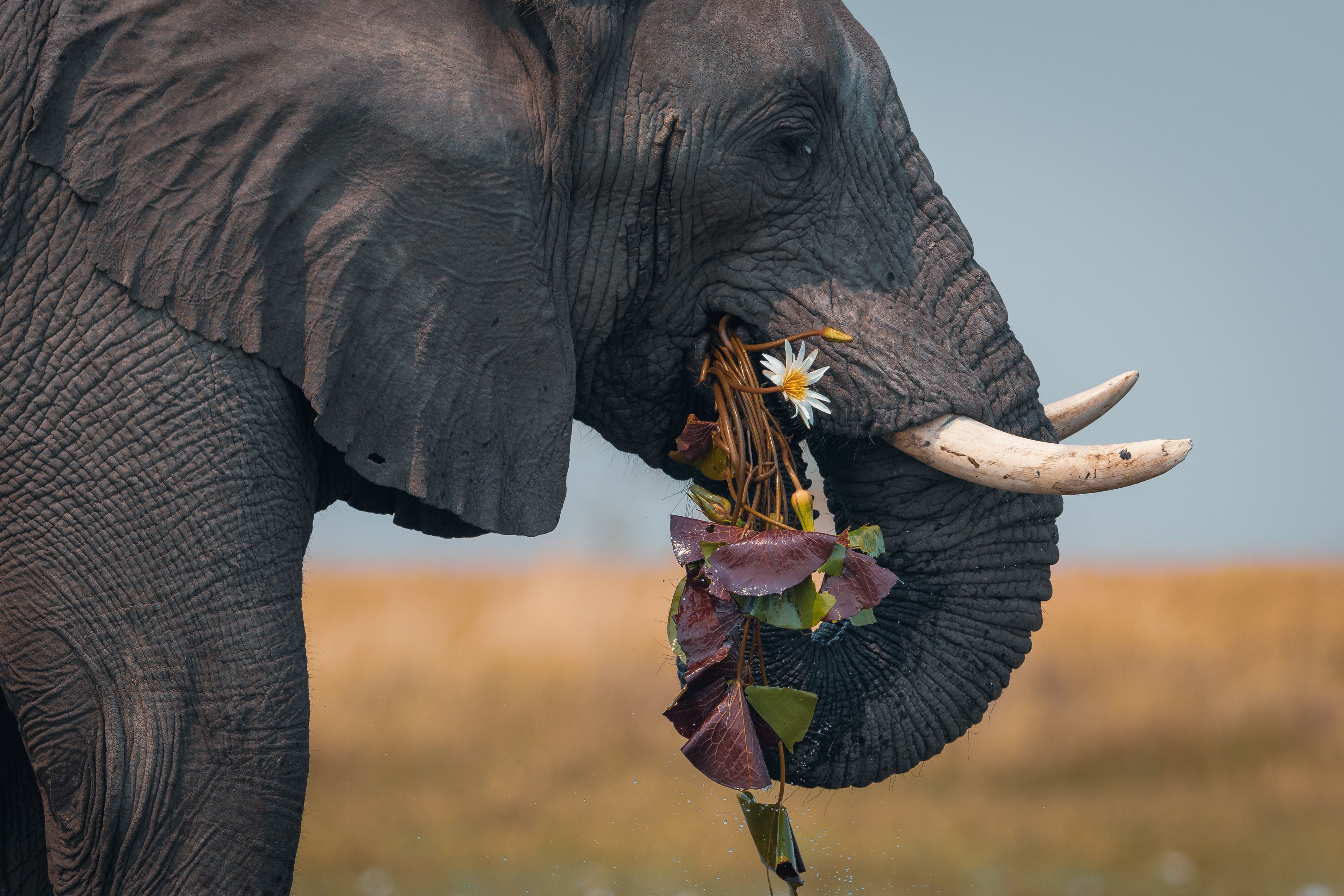Angola
Projecto Lisima is working closely with local communities, governments and conservation organizations to develop and implement sustainable conservation strategies that will safeguard the Source Lakes of the Okavango River basin for generations to come.
The National Geographic Society has partnered with the Wild Bird Trust in a conservation initiative designed to protect one of the planet’s last remaining wetland wildernesses, the Okavango River Basin and in particular the Okavango Delta, this is The National Geographic Okavango Wilderness Project (NGOWP). Through this partnership we have committed to using our scientific findings to increase the protection status for the forested upper watersheds of the Okavango and Zambezi Rivers in Angola which will result in increased water security for over a million people as well as the expansion of the Kavango–Zambezi Transfrontier Conservation Area (KAZA) and the facilitation of key wildlife corridors. The De Beers Corporation has now joined National Geographic in a five year partnership to help catalyse this critical work over the next few years under the Okavango Eternal Partnership programme.
In Angola, our work is focused around the village of Tempue in the Province of Moxico. The area we call Lisima after the Luchaze term Lisima Iya Mwono, or “Source of Life''. So we call this portion of the work Projecto Lisima.

the water tower of southern africa
An average of 2.5 trillion gallons of water flow through the Okavango watershed every year, providing water to a million people and creating a haven for wildlife.

The Angolan Highlands Water Tower, in southeastern Angola, is the primary water source for the Okavango Delta (found in Botswana). This region’s vast landscape of lakes, peatlands, miombo woodlands, and rivers provides sanctuary for a high concentration of biodiversity. Protecting this water tower is fundamental to the future of the Okavango, Kwando, and Zambezi rivers.
Over 95 percent of the water that flows to the Delta originates from rainfall in the Angolan highlands. There it is captured by source lakes and rivers like the Cuito, Cuanavale, Cuiva, Cuando, and Lungue-Bungo, that are surrounded by vast miombo woodlands creating an ecosystem characterised by seepages, streams, oxbow lakes, and ridgelines that make up the Angolan Highlands Water Tower. The water tower is critically important for sustaining water flow to the rest of the Okavango watershed.
Watch the video: Introducing the Angolan Highlands Water Tower, narrated by Dr Steve Boyes here
The health of this crucially important source of water for wildlife and people is dependent on a system of source lakes and rivers that originate in Angola — waters that currently have no official protections.
- Dr Steve Boyes


We are expanding on our research work to understand the importance of this water tower, not only to the Okavango Delta but to the Zambezi basin as well. We will also continue to research the importance of water towers in Southern Africa as sources of resilience to climate change.
Importance of our work
Elephants to termites, predators to prey; every living thing has it’s place in the Delta’s ecosystem—their survival depends on protecting biodiversity within a much wider landscape.
BIODIVERSITY
The Okavango Delta is one of the largest freshwater wetlands in southern Africa and is home to over 1,000 species of plants, more than 480 species of birds, 130 species of mammals, and numerous species of reptiles and fish. The attention of researchers, tourism and conservation investment has to date been focused on the Delta, but through the work of our researchers, we are showing there is so much worth protecting and seeing all through the Basin. To date, NGOWP has discovered 52 species new to science, more than 81 species potentially new to science, and more than 143 species previously unknown in Angola.
BIRDS
The Delta is recognized as an Important Bird Area by BirdLife International as it is home to 24 species of globally threatened birds. The expedition teams have documented 480 bird species, including four new species records for Angola, and collected data for 66 range extensions. Their bird surveys continue to add important data to the regional bird list including a newly discovered breeding population of the vulnerable wattled crane.


MAMMALS
Leopards, spotted hyenas, red lechwe, roan antelope, and sitatungas are widespread throughout the Okavango Delta. Some of the world’s most endangered animals like cheetahs and African wild dogs can be found here, as well as stable populations of iconic species such as elephants and lions.
The NGOWP’s camera traps confirmed the presence of the lion, cheetah, leopard, and critically endangered African wild dog in areas as far north as the Cuito and Kembo Rivers’ source lakes. This has led to the expansion of the known range for wild dogs and cheetahs, and the incorporation of this data into the recent National Conservation Action Plan for Cheetah and African Wild Dog in Angola. Another of the team’s camera traps recorded the first confirmation of sable antelope around the source lake of the Cuanavale River, a location more than 300 kilometres north of their current range. This has sparked new scientific discussion on the relative distribution of this species.
The crown jewel of the Delta is the world’s largest remaining population of elephants, numbering around 130,000, whose movements shape and reshape the Delta’s channels. The team confirmed the presence of elephants in the upper reaches of the water tower, between the Cuito and Cuando Rivers. This observation indicates that remnants of the great, historic Angolan population still survive and can once again flourish if the area is protected. This could help reduce the ecological pressures that Botswana’s large elephant population is exerting on the environment, which exceeds its carrying capacity, due in part to the Angolan population taking refuge there from poaching and the country’s civil war.
Securing a home in Angola for these elephants would allow them to safely migrate back into the Okavango-Zambezi Water Tower.
PLANTS
The team’s comprehensive surveys have resulted in the discovery of 14 plant species potentially new to science and 27 species newly recorded for Angola, filling one of the largest gaps in botanical knowledge on the African continent. The team also identified previously undocumented, large-scale stratified peat deposits surrounding the source lakes and rivers. These extensive peatlands act like a giant sponge absorbing both carbon dioxide and water, which is essential for sustaining the year-round flow of freshwater into the Okavango, Cuando, Zambezi, and Kwanza Rivers and ensuring that fish and wildlife can endure prolonged periods of drought.
PEOPLE & COMMUNITIES
The Okavango River Basin is the main water source for one million people across Botswana, Namibia, and Angola. The Delta is also a major tourist attraction, and provides an important source of income and employment for people living in the communities along the river. Developing alternative and sustainable sources of income for communities living around the source lakes is one of the main goals of Projecto Lisima.
We are working closely with the communities that are dispersed into about 50 villages around the sourcelakes of the Cuito and Cubango Rivers in Moxico, Angola. We have invested in social infrastructure, provided solar power and hold regular workshops with community members to ensure we are responding to their needs. Our work includes regenerative agriculture, support for beekeepers, financial inclusion and the co-development of community based systems of mapping, and monitoring their natural resources in order to better protect them for future generations.

our work
Our work to explore and protect the amazing biodiversity of the Okavango River Basin is vital to the health of the region. Your support not only helps preserve this important ecosystem, but it also funds the critical work of all of our explorers fighting to save threatened species, protect fragile habitats, uplift communities and understand the world around us through rigorous research, independent science, and conservation. Learn more about our conservation projects that contribute towards saving the Okavango Delta.
Join our flock
Subscribe to our newsletter to receive exciting news about our projects.
We care about the protection of your data. Read our Privacy Policy.